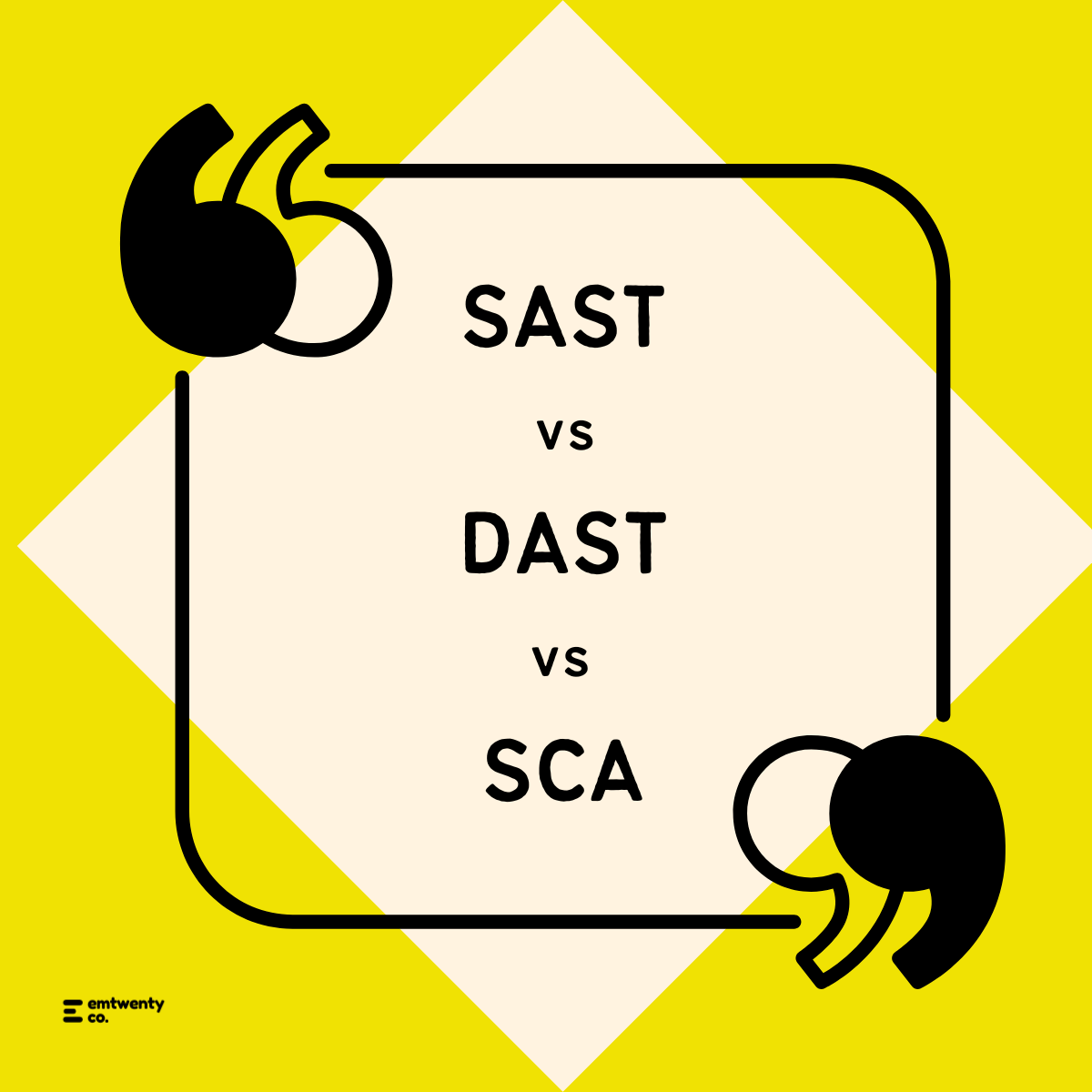SAST vs DAST vs SCA
 Emtwenty Co.
Emtwenty Co.
Static Application Security Testing (SAST), Dynamic Application Security Testing (DAST), and Software Composition Analysis (SCA) represent distinct approaches to ensuring application security, each with its own strengths and limitations.
SAST involves analyzing an application's source code without executing it. This method offers a deep dive into the codebase, identifying vulnerabilities such as injection attacks, insecure authentication mechanisms, and data leakage. SAST tools excel in providing comprehensive code coverage, examining every aspect of the code for potential flaws. However, they can be prone to generating false positives and may require considerable expertise to interpret results accurately. A typical example of an SAST tool is Sonarqube.
On the other hand, DAST evaluates applications in a runtime environment, interacting with them as a user would. By sending requests and analyzing responses, DAST tools uncover vulnerabilities such as input validation errors, session management issues, and misconfigurations. DAST is effective at identifying runtime vulnerabilities and providing insights into the application's behavior under real-world conditions. Nevertheless, it may miss certain types of flaws and cannot ensure complete code coverage, often necessitating manual verification. A typical example of a DAST tool is Intruder.
SCA focuses on verifying the security of third-party components used within an application. This approach is crucial for assessing the risks associated with using libraries, frameworks, and dependencies developed by others. SCA tools identify vulnerabilities in these components by cross-referencing them with known databases and exploit repositories. By promptly flagging vulnerable dependencies, SCA enhances software supply chain security, mitigating risks associated with third-party code usage. A typical example of an SCA tool is Black Duck.
In summary, while each approach—SAST, DAST, and SCA—brings valuable insights into application security, none is without its limitations. Organizations must carefully consider their specific security requirements and constraints to develop a robust testing strategy that combines multiple approaches. By leveraging the strengths of each method and addressing their limitations, organizations can enhance their overall security posture and mitigate the risks associated with software vulnerabilities effectively.
Subscribe to my newsletter
Read articles from Emtwenty Co. directly inside your inbox. Subscribe to the newsletter, and don't miss out.
Written by
